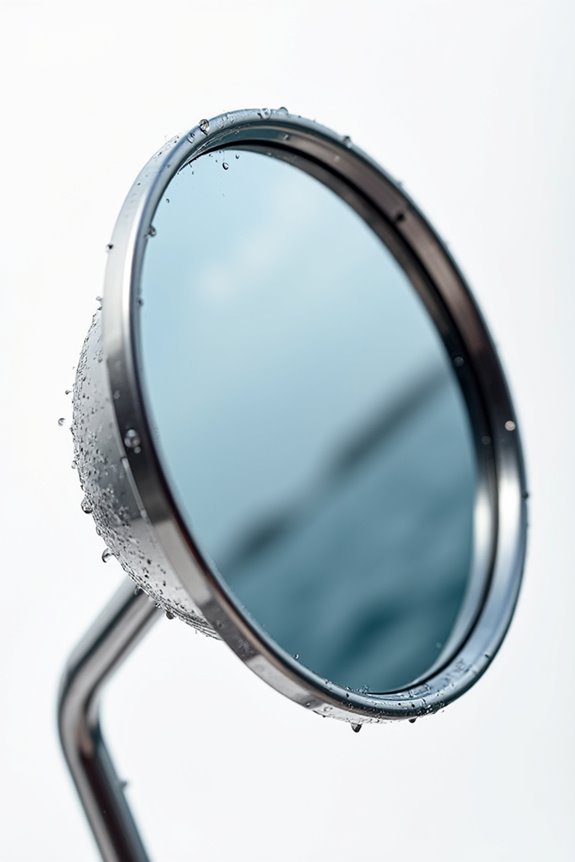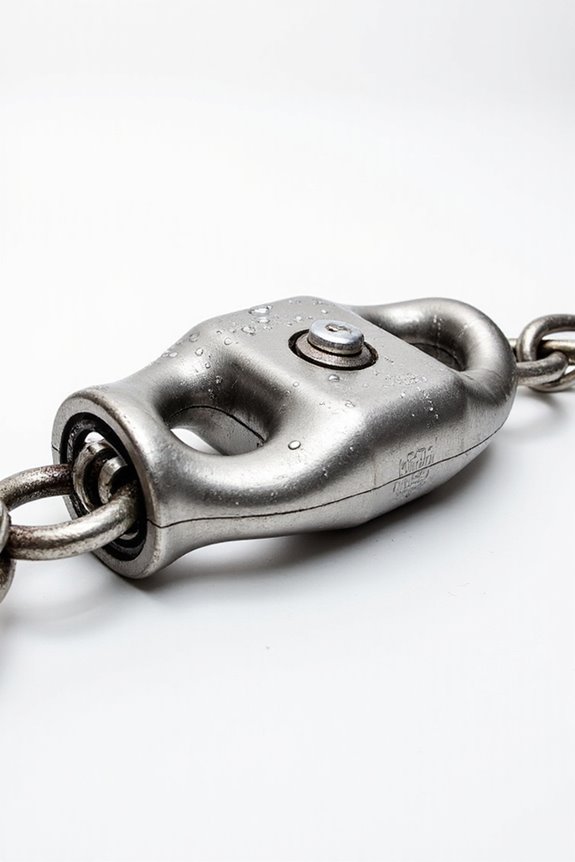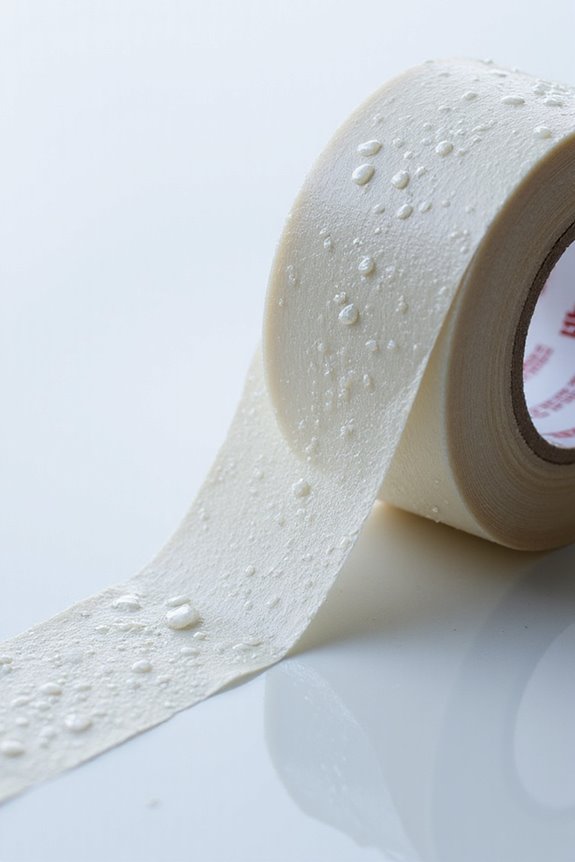When we talk about convex boat mirrors, think of them as your boat’s wide-angle sunglasses. Their outward curve spreads light, giving us a broader view and shrinking blind spots—handy for spotting surprises on the water. Images look smaller and farther, which might feel odd at first, but the extra warning space is worth it. Made from tough acrylic or polycarbonate, they’re built to handle harsh marine life. Curious how they stack up against other tech or how to mount them just right? Stick with us.
Key Takeaways
- Convex boat mirrors curve outward, creating a negative focal length that produces smaller, virtual images with expanded fields of view.
- The design causes image distortion, which increases the visible area and helps boaters spot hazards early.
- Convex mirrors enhance navigation safety by significantly reducing blind spots on busy waterways.
- Proper mounting and alignment of convex mirrors maximize their effectiveness without obstructing the boat operator’s view.
- Durable materials like acrylic and polycarbonate ensure convex mirrors withstand marine conditions while maintaining clarity and impact resistance.
Principles Behind Convex Mirror Design for Boats
Although we often take them for granted, convex mirrors play an essential role in boat design by offering a unique optical twist: they curve outward, causing light rays to spread apart rather than come together. This outward curve means their focal length is actually negative—a bit counterintuitive, right? Because of this, the images formed are virtual and smaller, leading to some image distortion. But don’t worry, this isn’t a flaw; it’s a clever way to expand what we see. The reduced image size means more surroundings appear at once, which is super helpful on busy waters. Understanding how focal length and image distortion work together lets us appreciate why these mirrors don’t just show us reality—they reshape it, giving us a broader perspective without us needing superpowers.
Enhancing Navigation Safety With Convex Mirrors

When we’re out on the water, keeping an eye on everything around us is key to staying safe—and convex mirrors are a simple but powerful tool to help with that. These mirrors offer visibility enhancement by widening our field of view, which means fewer blind spots and better chances to spot hazards early. Ever missed seeing something until it was too late? That’s where convex mirrors shine, literally! They give us a clearer picture behind and around the boat, making navigation smoother and accident prevention more achievable. Plus, many safety regulations actually encourage their use, acknowledging how much safer we all are with them on board. So, if you’re serious about safe boating, adding a convex mirror isn’t just smart—it’s almost a no-brainer.
Options for Installing and Mounting Boat Mirrors
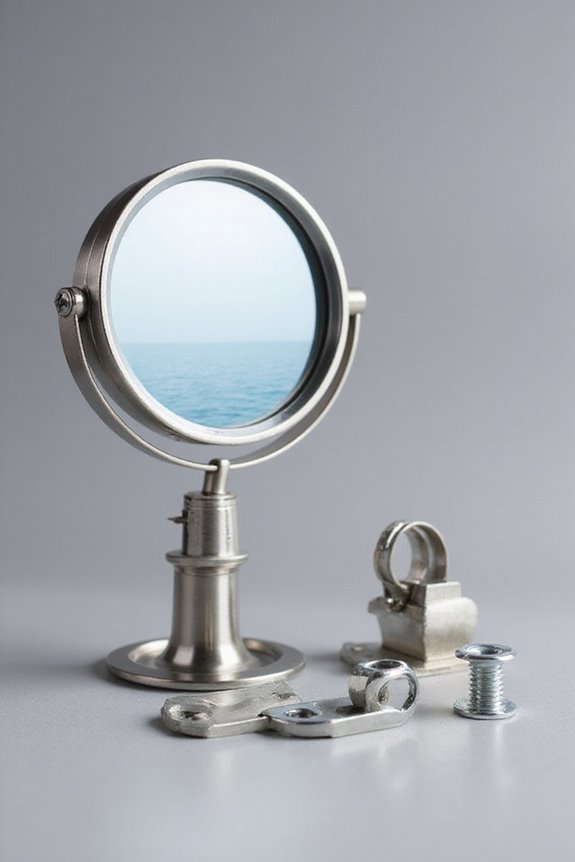
Since having the right mirror in place can make all the difference on the water, let’s explore your options for installing and mounting boat mirrors. Whether you’re eyeing a clamp mount for easy tube installation or a surface mount for consoles, there’s a mounting technique to fit your boat’s style. Installation tips? Always check alignment—nobody wants a mirror blocking the walkthrough or catching a rogue wave. Ball and socket brackets or pivot cup-mounts let you fine-tune angles, making sure your view stays sharp no matter who’s at the helm. Don’t forget tools like an Allen wrench and peel-and-stick gaskets—they make setup smoother. Plus, choosing mounting hardware with corrosion resistance keeps your mirror looking good season after season. Ready to get your mirrors perfectly positioned?
Materials and Durability in Marine Convex Mirrors
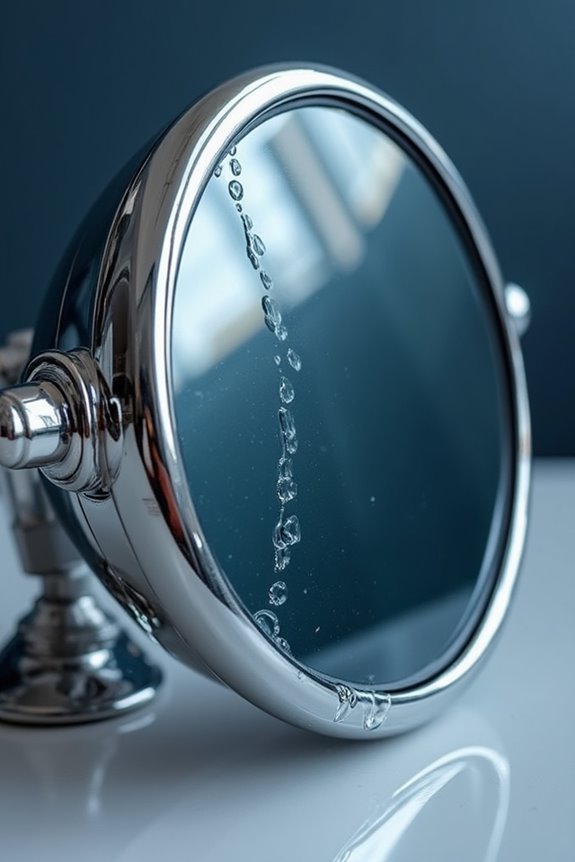
Now that we’ve got a handle on how to get your boat mirrors mounted just right, it’s worth checking out what they’re actually made of. When it comes to marine convex mirrors, material choice matters—big time. Acrylic advantages include excellent impact resistance; it’s 15 to 17 times stronger than glass and offers solid UV protection, making it great for most boaters who want durability without breaking the bank. But if you’re maneuvering tougher waters or expect rougher conditions, polycarbonate durability is tough to beat. It’s 200 to 250 times stronger than glass and handles extreme temperatures like a champ. So, whether you go acrylic or polycarbonate, both options provide corrosion resistance and weather endurance, keeping your mirror clear and functional through sun, salt, and storms. Ready for your reflection to hold up?
Comparing Convex Mirrors to Other Marine Viewing Technologies
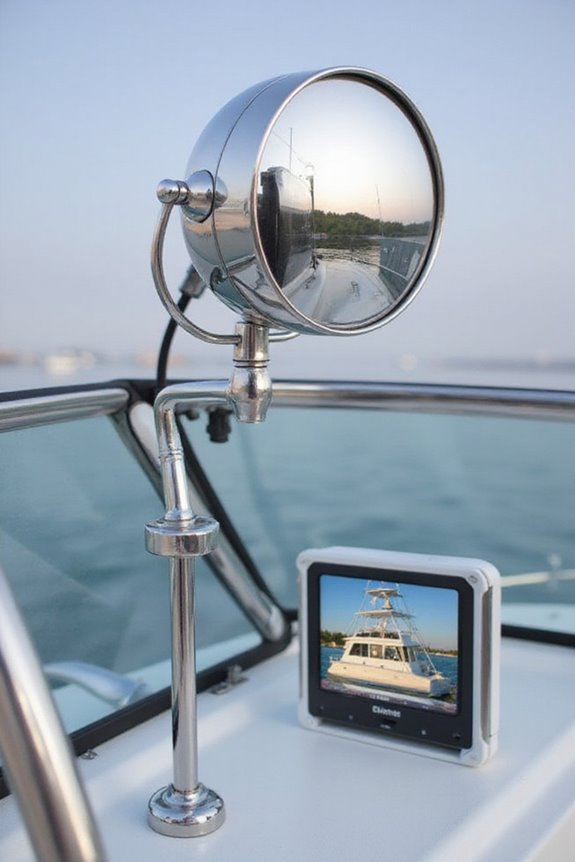
Let’s plunge into how convex mirrors stack up against other marine viewing options—because choosing the right gear for your boat isn’t always straightforward. Convex mirrors offer clear comparison benefits, like a wide panoramic field of view covering 120–140 degrees, which flat mirrors just can’t match. They help reduce blind spots and boost safety, especially in tight marinas. But they do have viewing limitations; their images appear smaller and farther away, which might trick newer boaters. Unlike panoramic cameras that need power and screens, convex mirrors work passively, needing no tech fuss. Radar and sonar detect objects but don’t show a visual, and other tools like periscopes can be bulky. So, while not perfect, convex mirrors provide a reliable, simple solution many mariners rely on. Who doesn’t love a hardworking mirror?
Frequently Asked Questions
Can Convex Boat Mirrors Be Used Effectively at Night?
It is understood night visibility with convex boat mirrors is limited, and mirror glare can be an issue. That’s why we rely on extra lighting and adjustments, ensuring we all stay safe and connected on nighttime adventures together.
What Is the Ideal Mirror Size for Different Boat Types?
When choosing mirror dimensions, let’s consider boat compatibility. Small boats suit 2½-by-8 inches, wake boats need larger 7×20-inch mirrors, pontoons benefit from 4.5×8 inches, and large boats often require multiple or tower-mounted mirrors.
How Do Temperature Changes Affect Mirror Performance?
Ever wondered why your mirror’s clarity sometimes fades? We understand thermal expansion can warp its shape, reducing reflective quality. Together, let’s keep our gear sharp, embracing care that guarantees every glance stays crystal clear and reliable.
Are There Specific Cleaning Methods Recommended for Convex Boat Mirrors?
When cleaning convex boat mirrors, we use mild soapy cleaning solutions and soft cloths to avoid damage. For maintenance tips, we regularly inspect, tighten mounts, and protect mirrors to keep visibility clear and our boating community safe.
Can Convex Mirrors Be Customized for Unique Boat Shapes?
Just like a tailor crafts suits, it is understood that custom mirror shapes adapt perfectly to your boat design considerations. Together, we’ll find mirrors that fit unique curves, ensuring safety and a seamless boating experience for everyone aboard.

